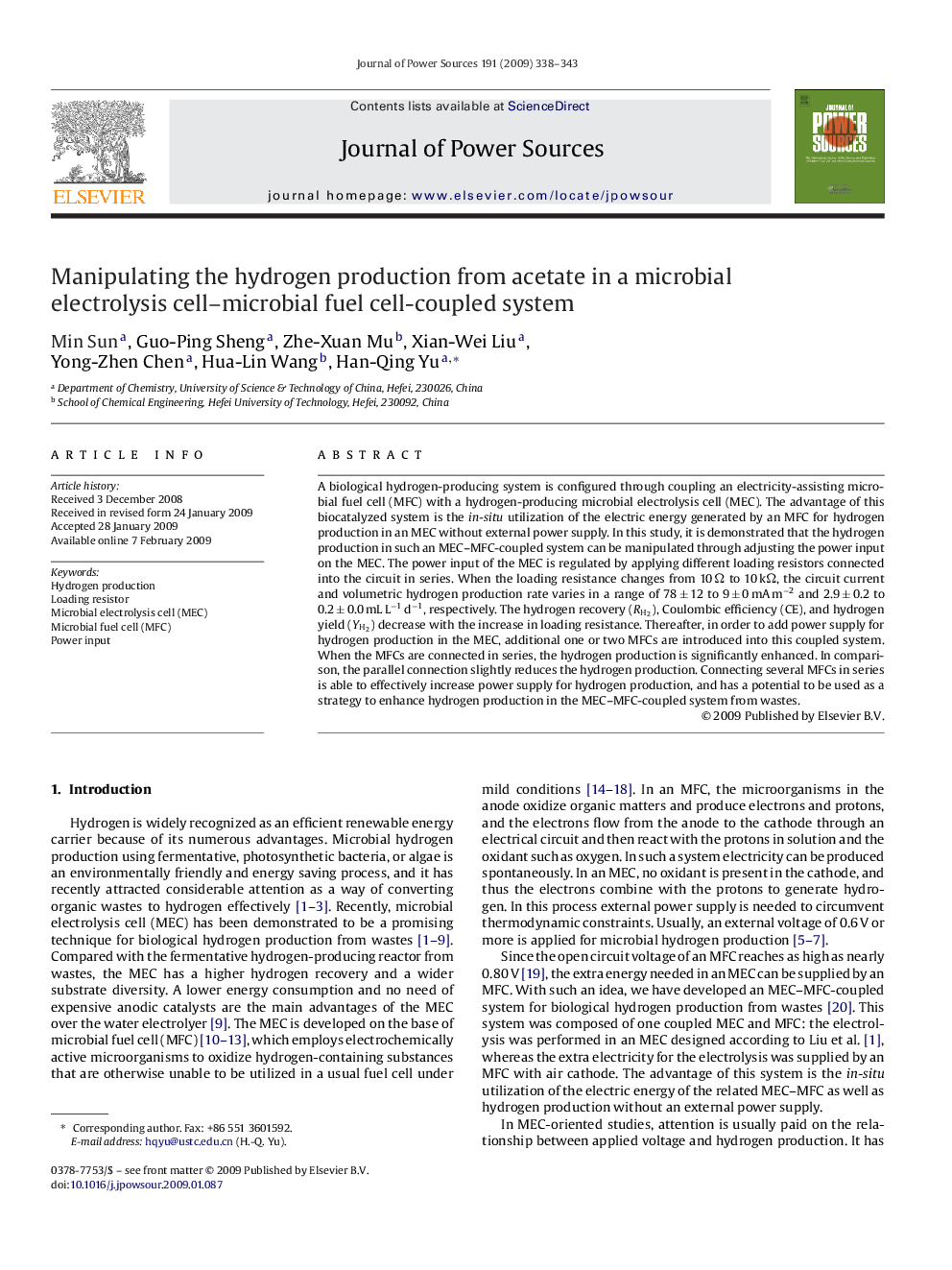| Article ID | Journal | Published Year | Pages | File Type |
|---|---|---|---|---|
| 1289722 | Journal of Power Sources | 2009 | 6 Pages |
A biological hydrogen-producing system is configured through coupling an electricity-assisting microbial fuel cell (MFC) with a hydrogen-producing microbial electrolysis cell (MEC). The advantage of this biocatalyzed system is the in-situ utilization of the electric energy generated by an MFC for hydrogen production in an MEC without external power supply. In this study, it is demonstrated that the hydrogen production in such an MEC–MFC-coupled system can be manipulated through adjusting the power input on the MEC. The power input of the MEC is regulated by applying different loading resistors connected into the circuit in series. When the loading resistance changes from 10 Ω to 10 kΩ, the circuit current and volumetric hydrogen production rate varies in a range of 78 ± 12 to 9 ± 0 mA m−2 and 2.9 ± 0.2 to 0.2 ± 0.0 mL L−1 d−1, respectively. The hydrogen recovery (RH2RH2), Coulombic efficiency (CE), and hydrogen yield (YH2YH2) decrease with the increase in loading resistance. Thereafter, in order to add power supply for hydrogen production in the MEC, additional one or two MFCs are introduced into this coupled system. When the MFCs are connected in series, the hydrogen production is significantly enhanced. In comparison, the parallel connection slightly reduces the hydrogen production. Connecting several MFCs in series is able to effectively increase power supply for hydrogen production, and has a potential to be used as a strategy to enhance hydrogen production in the MEC–MFC-coupled system from wastes.
